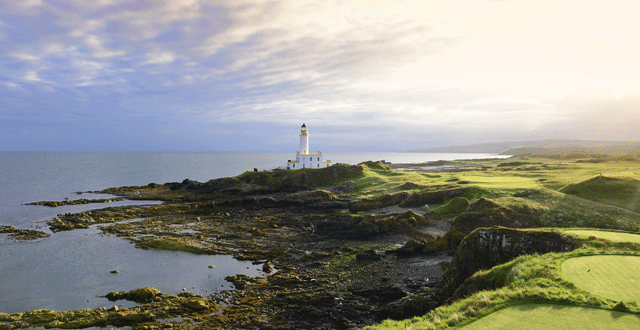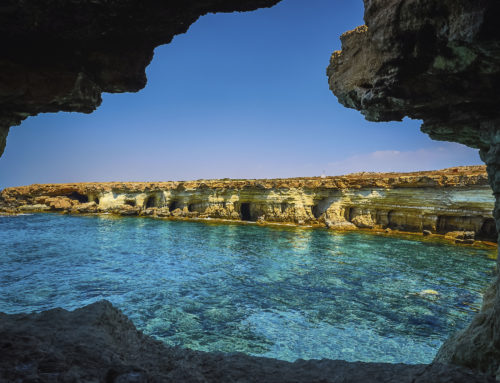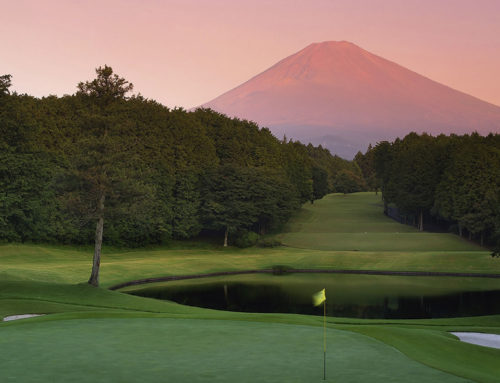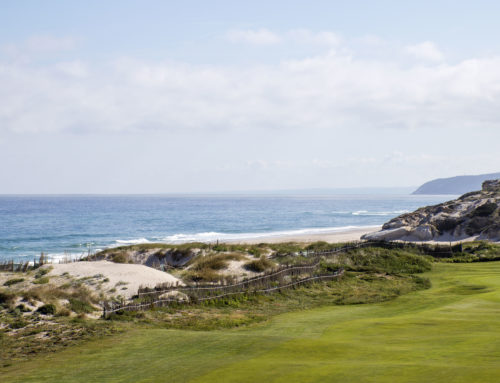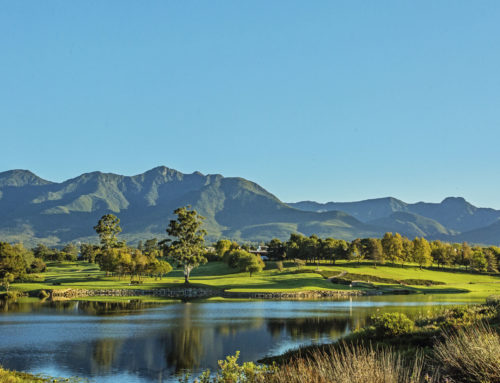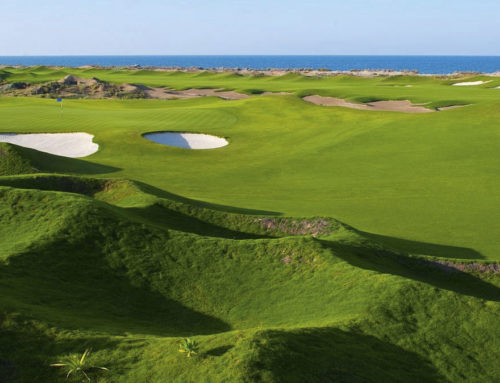When the steam train pulled up to Turnberry’s only platform, the ladies and gents would excitedly head down the covered walkway to the glamorous entrance of the newly opened luxurious Turnberry Station Hotel. The hotel opened the same year as the station, 1906, to allow people to enjoy the pleasures of the two golf courses, the No.1 18-hole 6,248 yarder and the ladies’ 1,690-yard nine-hole. Back then, the No.1 would roughly map where the Ailsa is today, with the second course covering part of what is now the nine-hole Arran course. Both were the work of Willy Fernie, winner of The Open in 1883, and four-time runner-up.
But it wasn’t just the allure of the golf courses that brought people from either end of the Maidens and Dunure branch line (that ran from Ayr to Girvan) or indeed from Glasgow and beyond. People flooded here for the weather; this slice of Ayrshire coastline is branded the ‘sunshine corner’ of Scotland, which is either a matter of context or hyperbole, depending on your outlook. They also headed here for the fine croquet lawn, the tennis courts, the swimming pool and the three-table billiard room, a ‘handsome apartment’ in anyone’s book.
As they headed into the hotel, after being wowed by the welcome in the oak-panelled entrance hall, complete with Italian marble floors and, to quote a review from the time, ‘richly decorated plaster’, they would have been eager to reach their rooms. Even that short journey would have been all the more thrilling, thanks to the ‘electric lifts’, in place to ‘communicate with various floors’. And then there were the suites. Whatever style they’d have selected, either Old English, Queen Anne or Chippendale, the guests would have enjoyed the most modern way of heating — ‘low-pressure steam’, together with perfect ventilation and sanitation. Fortunately, boasts one promotional poster, the ‘walls, partitions and principal floors are fire-proof’ — which is good to know.
And then there was the history. Just as it does today, the view from the elevated position of the hotel, some 100ft above the nearby coastline would not only take in the golf course, but also the lighthouse, built in 1878 by Thomas and David Stevenson, father and uncle of the author Robert Louis Stevenson. None of the hotel visitors would know of Stevenson’s impending fame; they would, however, have known about the castle ruins on which the lighthouse was built. These date back to the 13th century, when it was the home of the Earl of Carrick, whose daughter Marjorie would marry Robert de Brus (Bruce) and then have a son, Robert, who would go on to become King of Scotland. At Turnberry he was born, and to Turnberry he returned from exile (after finding inspiration in the Irish spider attempting to land on a beam).
So there were many reasons for visitors to flock to Turnberry. History, luxury, convenience, but golf was the number one motivation to head here.
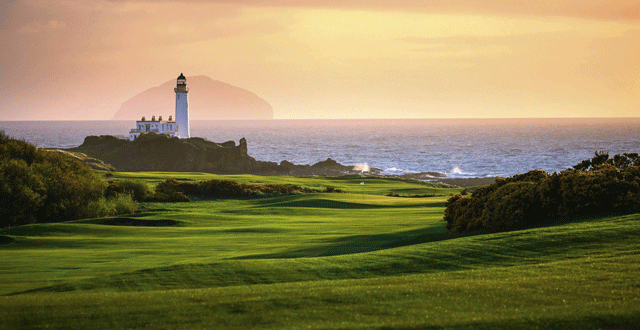
Golfing history
The golf course pre-dated the hotel and station by five years, officially opening in 1901. Right from the start it was popular. When the club was opened the following year, there were 128 membership applications all of whom became the founding members. Within four years that number had swollen to 500, with members from as far afield as London, Belfast and even South Africa.
The Ladies’ British Amateur Open arrived in 1912, the Scotland Professional arrived in 1954, the PGA Match Play in 1960, before The Open took Turnberry into the hearts of all golfers in 1977. It seems as if the whole world watched Tom Watson take the title in the ‘Duel in the Sun’, defeating Jack Nicklaus with the final putt after his famous approach shot to the 18th saw him get within two yards of the hole with a seven-iron from 178 yards out.
Nine years on, The Open was back at Turnberry, this time with Australian Greg Norman, then the leader on the US money list. Taking the title by five shots with a final round of 69, he battled severe conditions of heavy rain and strong winds for the rounds leading up to it.
Nick Price beat Jesper Parnevik by a single stroke to the 1994 Open at Turnberry, before history almost repeated itself in 2009. Aged 59, it was a single missed putt from eight foot that cost Tom Watson a ninth Major that would’ve made him the oldest winner of a Major. Losing a play-off to fellow American Stewart Cink by six shots, Watson’s tournament remains the stuff of golfing legend despite coming off second best.
It’s moments like this that puts Turnberry on the bucket list of every golfer the world over, even those not born when Watson picked up that seven-iron. Last year, it was voted No.1 in UK and Ireland, and its lighthouse is as iconic as any landmark on any golf course, likewise its famous runways.
Those strips of tarmac only add to its already rich heritage. During both World Wars, the course was taken over to be used as an airfield, hence these unusual additions to the golf course. In 1916, the War Department took over to use it for aerial gunnery training by the Royal Flying Corps, then again in 1941, it was used by RAF Coastal Command for torpedo training, including ‘bouncing bomb’ practice by the 618 squadron. However, planes flew so low that, when combined with fierce winds rolling in from the sea, training casualties weren’t unheard of.
As a result, these runways are a huge part of what makes Turnberry special. It’s said when a move to remove them was mooted, the R&A told Turnberry it would put its status on The Open rota under threat.
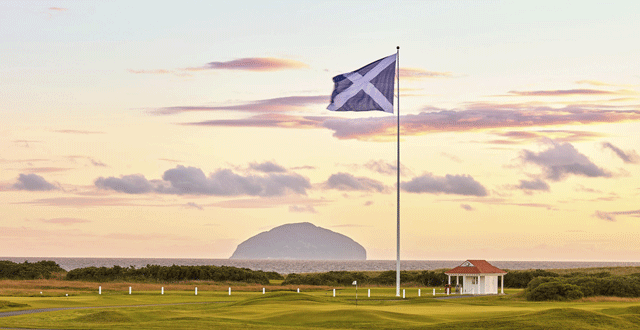
The modern age
More than 100 years after those first excited passengers arrived at Turnberry, a new arrival was less than impressed when he took a tour of the hotel in 2014. The train station was long gone (closing down in 1942 — its roof did however enjoy a second life as the terrace roof of Dumbarton FC) and it certainly didn’t have quite the same impact upon arrival. That visitor was also the new owner, who had snapped up Turnberry for around £26m. Having never inspected it himself before buying it, he took his first tour of the building with the general manager in tow. What he saw was a building creaking, rattling and cracking at every turn. The smell of damp pervaded from the walls, which would require the outer cladding to be removed from the entire building; every single draughty window needed replacing; unsightly netting clung to the roof in a poor attempt to keep off birds who’d been damaging it for decades. And that was just for starters. The owner was also obsessed with golf, he had brought with him a picture of Gary Player and was determined to find a space for it in his new property. He’d walked the course and, with his team, had noted the poor state of the course and also questioned the best way for crowds to navigate their way around it — he was thinking of the next Open already. Not without ambition, he almost immediately put £100m down for dramatic renovations.
The course needed a facelift, and Mackenzie & Ebert were quickly brought in to carry out what was the eighth rerouting of the Ailsa in its 112-year history. The hotel would effectively be gutted; every room, every fitting, every mirror, every carpet, everything. Those windows would be replaced and that roof would be repaired. A huge £12m Crystal Ballroom would be added to one wing and it would close for nine months in which to do so. The inside of the lighthouse would be transformed into a unique lodge: perhaps the most special halfway house in golf.
While certain aspects of the new look might not be to every one’s taste — hotel-wise, there’s a lot of gold and subtle isn’t always par for the course — it doesn’t rattle or creak anymore, and there’s no cracks. It’s a modern, luxury hotel, with all the mod cons, just as it was once back in the early 1900s. There’s a creche, a gym, an excellent spa, swimming pool, the ballroom is breathtaking and the food is as you’d expect at this level of the price range. But you can get that anywhere. What you can’t get is, firstly, the view from the hotel. Watching the sunset from the terrace stretching the length of this elevated hotel, the sky turns so many shades no picture will ever be the same.. Right before you is a pitch and putt course unlike any other — designed by Martin Ebert and watered and preened with the care and regularity of any full-size 18-holer course you’ll ever play.
To one side of the view is the driving range where you can fire straight at the lighthouse, then there’s the clubhouse with walls full of golfing memories, and then there’s the Ailsa, a course of outstanding rugged beauty. Hugging an Ayrshire coastline, both Arran and Ailsa Craig (the granite of the island is used for curling stones) make for a stunning seascape, joined by the occasional fishing boat searching for cod or razorfish, not to mention myriad birdlife from guillemots, gannets and gulls to Arctic skua, kittiwakes and puffins.
Ebert has created five new holes on the Ailsa and a whole new golf course in the neighbouring King Robert the Bruce. There are no bad views or even average holes among the 36. Ailsa has a run of eight coast-hugging holes, and personal favourites will vary depending on who you ask and what time of day they play. The light can hit this course in so many ways that it almost appears to alter geography. Technically, the course meets every golfers’ needs and then some — you’ll find scratch golfers as in awe as those who find themselves taking nine attempts to escape from a bunker.
Of course, for every positive platitude you can throw at Turnberry, in recent times, there’s a but, specifically referring to the owner whose name is now the prefix for Turnberry: Trump. Whatever you think of Donald Trump’s politics, Turnberry has and always will be Turnberry, and while he’s certainly modernised both the course and resort, the reason for going is not because of what happened in the last four or so years, but what happened in the 112 years before that.
Ailsa green fees from £100.

